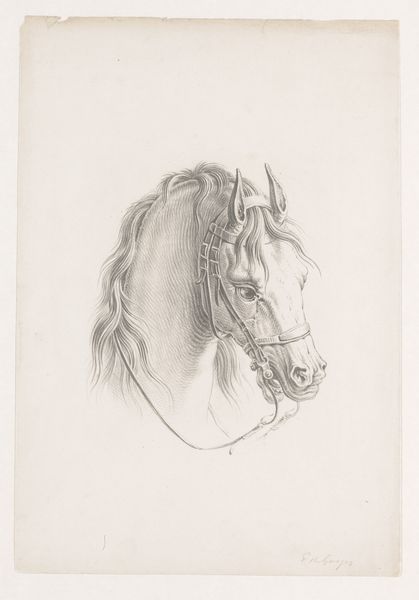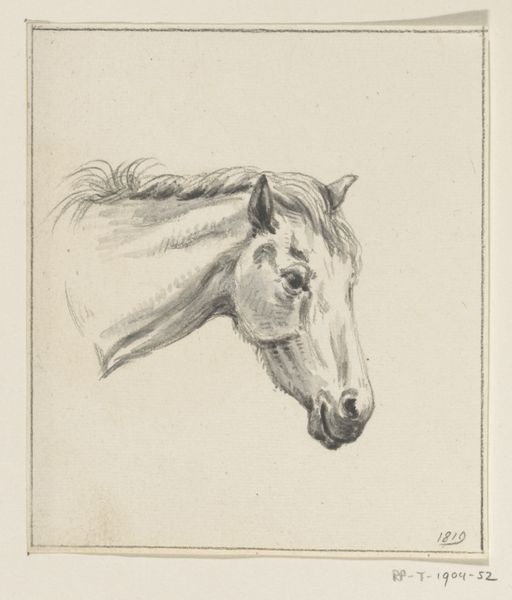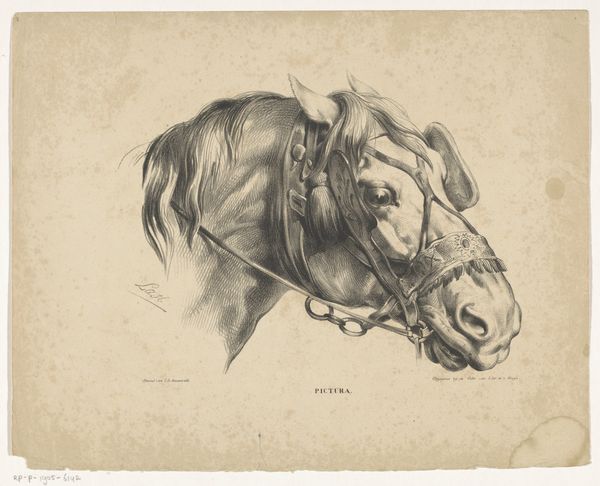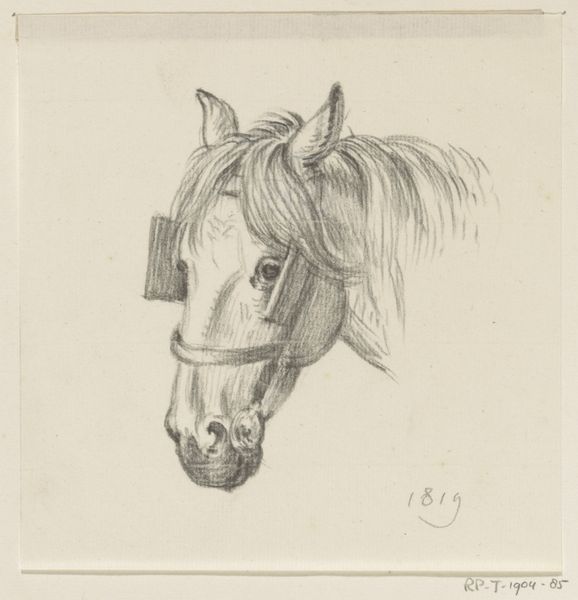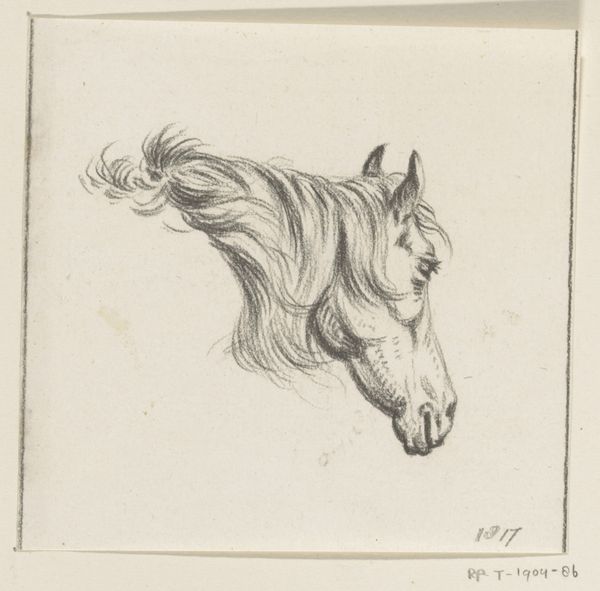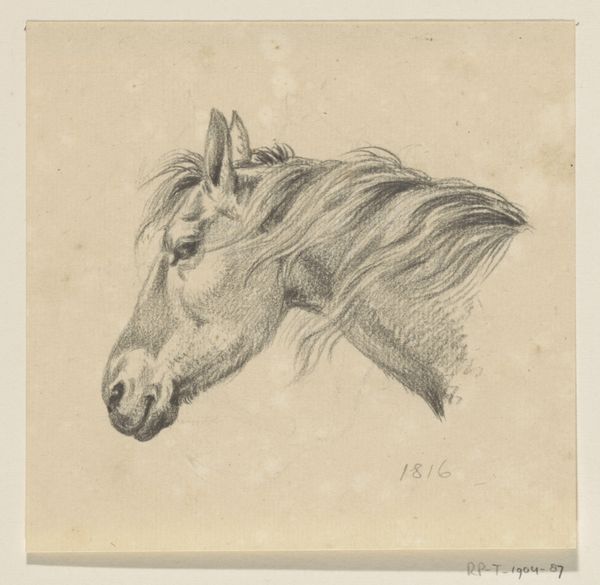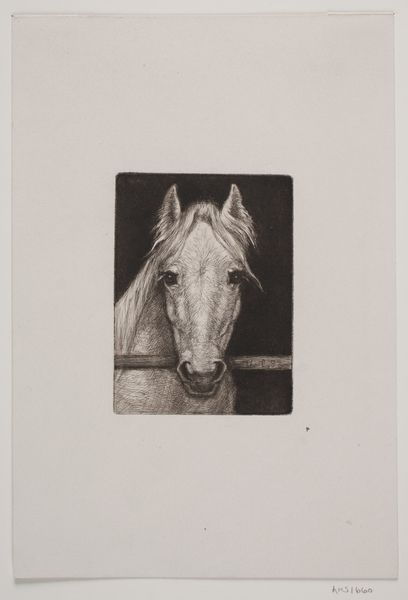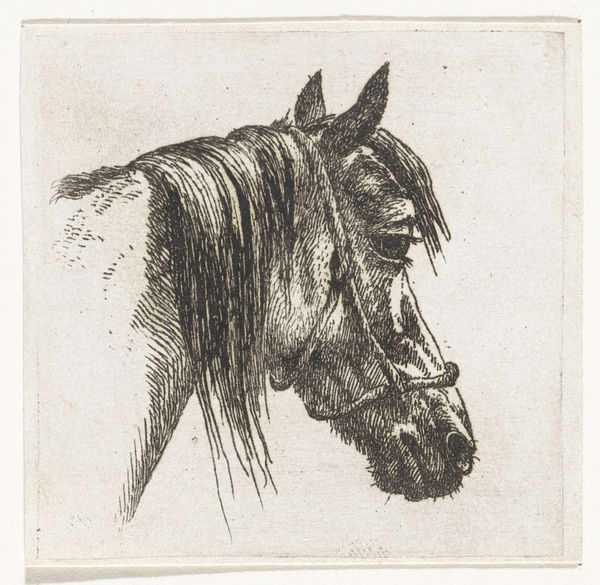
#
pencil drawn
#
amateur sketch
#
facial expression drawing
#
light pencil work
#
pencil sketch
#
portrait reference
#
pencil drawing
#
horse
#
animal drawing portrait
#
portrait drawing
#
pencil work
Dimensions: height 486 mm, width 320 mm
Copyright: Rijks Museum: Open Domain
Editor: We're looking at "Hoofd van een Arabisch paard" (Head of an Arabian Horse) by Victor Adam, created around 1843. It's a pencil drawing and it strikes me as surprisingly lifelike for a sketch. The shading really gives the horse's head dimension. What compositional elements stand out to you? Curator: The stark contrast between the detailed rendering of the horse’s face and the relative emptiness surrounding it demands our immediate attention. Consider the lines themselves. They’re not merely representational; they contribute a graphic quality to the overall design. The density of marks defining the musculature around the eye, for instance, contrasted with the sparse treatment of the neck, creates a dynamic tension within the form. Editor: That contrast definitely brings the eye up to the horse's face. What about the expressiveness captured despite being just a drawing? Curator: Precisely! Observe how the varying pressure applied to the pencil—the impasto, if you will—creates subtle tonal shifts that sculpt the form. These tonal variations aren’t simply descriptive; they evoke a palpable sense of volume and texture. The play of light and shadow becomes a structural element, defining the contours and suggesting depth. Notice too the carefully placed highlights that animate the surface and contribute to the horse’s commanding presence. Editor: So you’re saying it's not just what is depicted, but how it’s depicted that matters most? Curator: Precisely. By analyzing the artist's manipulation of line, tone, and composition, we unlock deeper appreciation, moving past mere representation to understanding how formal elements convey the essence of the subject. Editor: That's a great way to look at it; I'll definitely think more about technique going forward. Curator: And I’m reminded of the enduring power of simple mediums when wielded with intention and skill.
Comments
No comments
Be the first to comment and join the conversation on the ultimate creative platform.
